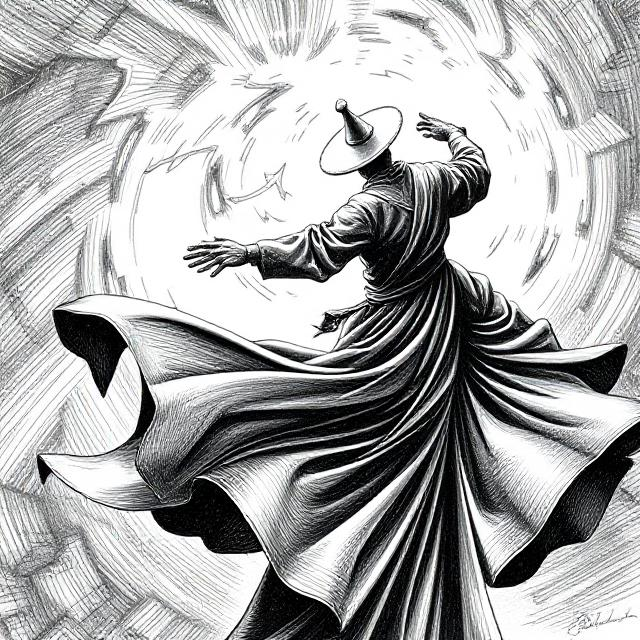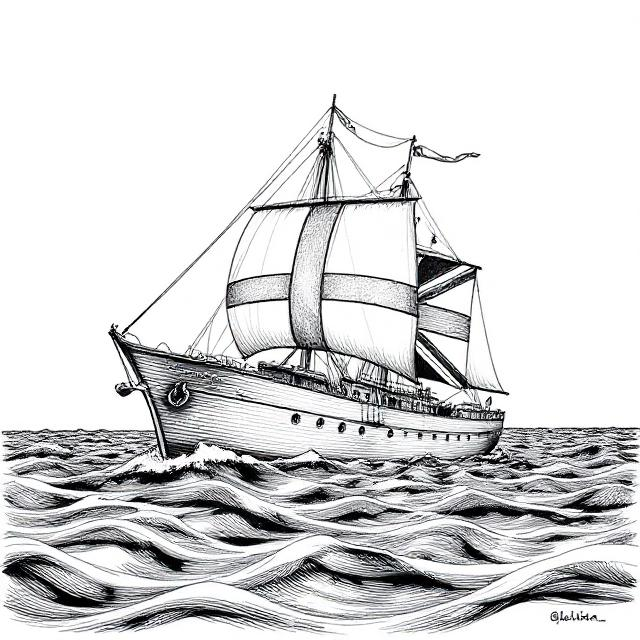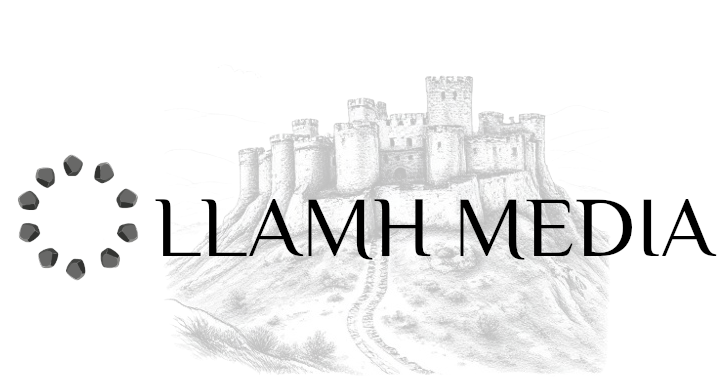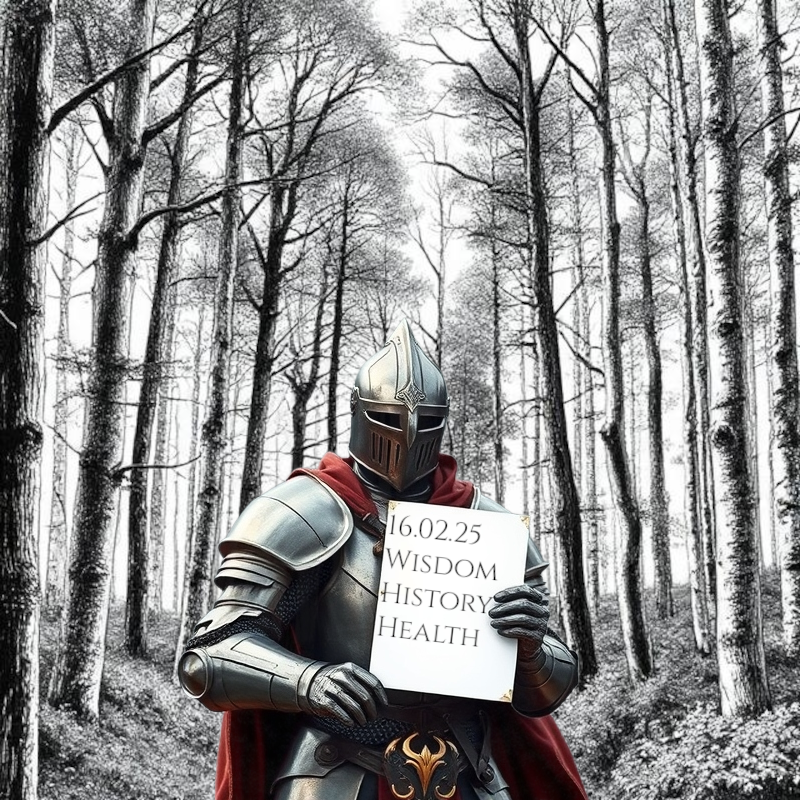This week in your weekly wisdom, history and health newsletter, we will discuss who is Rumi? What we can learn from Beowulf and the Art of Unarmed Combat.
Who is Rumi?
Jalal ad-Dun Muhammad Rumi (1207 – 1273), commonly known as Rumi, was a Persian poet, Islamic scholar and Sufi mystic whose works have had a lasting impact on both Islamic and Western thought. Born in Balkh (modern-day Afghanistan) and later settling in Konya (present-day Turkey), Rumi’s poetry and teachings transcended cultural and religious boundaries, making him one of the most celebrated mystical poets in history.
Rumi and the Exoteric Path of Islam
While Rumi is often associated with deep mystical insights and Sufism, it is crucial to recognise that he was firmly grounded in the exoteric. Therefore, we can say that he was a ‘practicing Muslim’. In the west there is a tendency to paint Rumi as a perennial type. However, it is clear that he was learned and taught Islamic law. For example, he was a respected jurist and scholar, following the Hanafi school of jurisprudence. His early years were dedicated to traditional Islamic scholarship, and he inherited his father’s position as a religious teacher. Interestingly, we can see how his legal and theological expertise made him a prominent figure in the Islamic world. However, it was after his mystical transformation that he became the personality we know of today.
Rumi’s devotion to Islam remained evident even as he delved into Sufism. His poetry, particularly in the Mathnawi, frequently references the Qur’an and Hadith. He saw Sufism not as an alternative to orthodox Islam, but its essence.
The Name “Rumi” and His Connection to the West
Interestingly, Rumi’s name itself is a reflection of the historical crossroads he inhabited. “Rumi” means “from Rome” in Arabic and Persian, a title given to him because he lived in the Eastern Roman Empire. For Muslims, “Rumi” was often used to refer to Europeans or those from former Roman territories. This highlights the blending of cultures in the medieval Islamic world and how Rumi’s thought, though deeply Islamic, was shaped by his environment.
Rumi’s Influence on Islamic and Western Thought
Rumi’s impact on Islamic thought lies in his ability to bridge legalistic Islam with spiritual depth. His Sufi teachings emphasised love, unity and the dissolution of the ego. He also greatly influenced the Mevlevi Order (Whirling Dervishes), who use dance and music as forms of devotion.
In the West, Rumi’s poetry, particularly in its 20th century translations, has been embraced for its universal themes of love and transcendence. Though often stripped of its Islamic context, his work continues to inspire seekers of all backgrounds.

Beowulf
The story of Beowulf is not just an epic tale of heroism; it is a window into the Anglo-Saxon worldview, revealing their values, fears and aspirations. Composed between the 8th and 11th centuries, Beowulf reflects a society shaped by war, loyalty and the relentless pursuit of glory. The poem, set in Scandinavia, tells the story of a warrior who embodies the ideal traits of the Anglo-Saxon hero.
Anglo-Saxon Values and the Warrior Ethos
At its core, Beowulf presents a society where honour and reputation were paramount. The Anglo-Saxons believed that life was fleeting and immortality lay in being remembered. Personally, I see this as an interesting parallel with the worldview we can observe in Homer’s Iliad. Beowulf’s insistence on facing monsters like Grendel and the dragon alone is not just personal bravery. This is a reflection of the Germanic warrior code. This emphasis on courage and legacy reveals the fatalistic yet determined psyche of the Anglo-Saxon people, who saw life as a struggle against fate (wyrd).
Loyalty was another crucial value. Beowulf’s unwavering service to Hrothgar, and later his own people demonstrates this. This sense of duty and mutual obligation carried into later British ideals of service to king and country.
Beowulf and the British Empire’s Seafaring Spirit
One of the lesser-discussed aspects of Beowulf is its maritime setting. The hero and his warriors travel across the sea to reach the Danish kingdom, underscoring the Anglo-Saxon relationship with the ocean. Unlike the Romans, who built roads to connect their empire, the Anglo-Saxons and later the British saw the sea as their primary avenue for expansion and conquest.
Beowulf’s willingness to embark on perilous journeys, armed only with his courage and sword, mirrors the later British seafaring spirit. The same bravery that led Beowulf to face the unknown was echoed centuries later in British explorers, naval commanders, and empire-builders who saw the ocean not as a barrier but as a pathway to glory. The idea of venturing into the unknown, of proving one’s worth through daring deeds, shaped Britains maritime empire and its global reach.
Thus, Beowulf is more than an ancient poem. Beowulf is a glimpse into the Anglo-Saxon psyche. This very mindset, fuelled British resilience, exploration and naval dominance.

The Art of Unarmed Combat
The art of unarmed combat has existed for as long as humans have engaged in conflict. Across cultures and throughout history, societies have developed and refined methods of fighting without weapons, leading to the enduring popularity of both boxing and grappling. Whether for self-defense, sport or military training, unarmed combat has remained a crucial aspect of human development.
Boxing & The Science of Striking
Boxing, often called “the sweet science,” is one of the oldest forms of unarmed combat. The origins of boxing trace back to ancient Mesopotamia and Egypt. However, it was the Greeks who formalised it in the Olympic Games around 688 BCE. Greek athletes used leather straps on their hands for protection, while interestingly the Romans did not feel it was brutal enough. Therefore, their fighters would use metal-studded gloves in gladiatorial combat.
Despite its somewhat violent past, modern boxing has become a refined and strategic sport. It is not merely about brute force but about precision, footwork, timing and defensive skills. Fighters spend years honing their ability to read an opponents movements, improving their endurance and perfecting combinations. The sport requires intense discipline, with fighters dedicating themselves to rigorous training regimens, including sparring, strength conditioning and mental preparation.
Grappling & The Science of Control
Grappling, which can include wrestling, judo, BJJ and other submission-based arts, has an equally long history. Once again, ancient civilisations such as the Greeks and Romans placed great emphasis on wrestling, using it as a both a sport and a form of military training. Traditional Japanese jiu-jitsu and later judo emphasised using leverage and technique to overcome stronger opponents, a philosophy that modern BJJ continues to refine.
Grappling is a test of control, positioning and endurance. Unlike striking arts, which rely on impact, grappling focuses on controlling an opponent through holds, locks, and submissions. Practitioners dedicate years to mastering techniques, learning how to manipulate their opponents weight, anticipate movements and execute flawless transitions. The complexity of grappling ensures that it remains a lifelong pursuit, with even the most skilled practitioners continually refining their craft.
The Pursuit of Mastery
Throughout history, people have dedicated their lives to the mastery of unarmed combat, driven by the pursuit of excellence, self-improvement and the challenge of facing skilled opponents. Whether in the ring, on the mat, or in self-defence, the refinement of these skills is a testament to human perseverance, strategy and the timeless appeal of testing one’s abilities against another.


